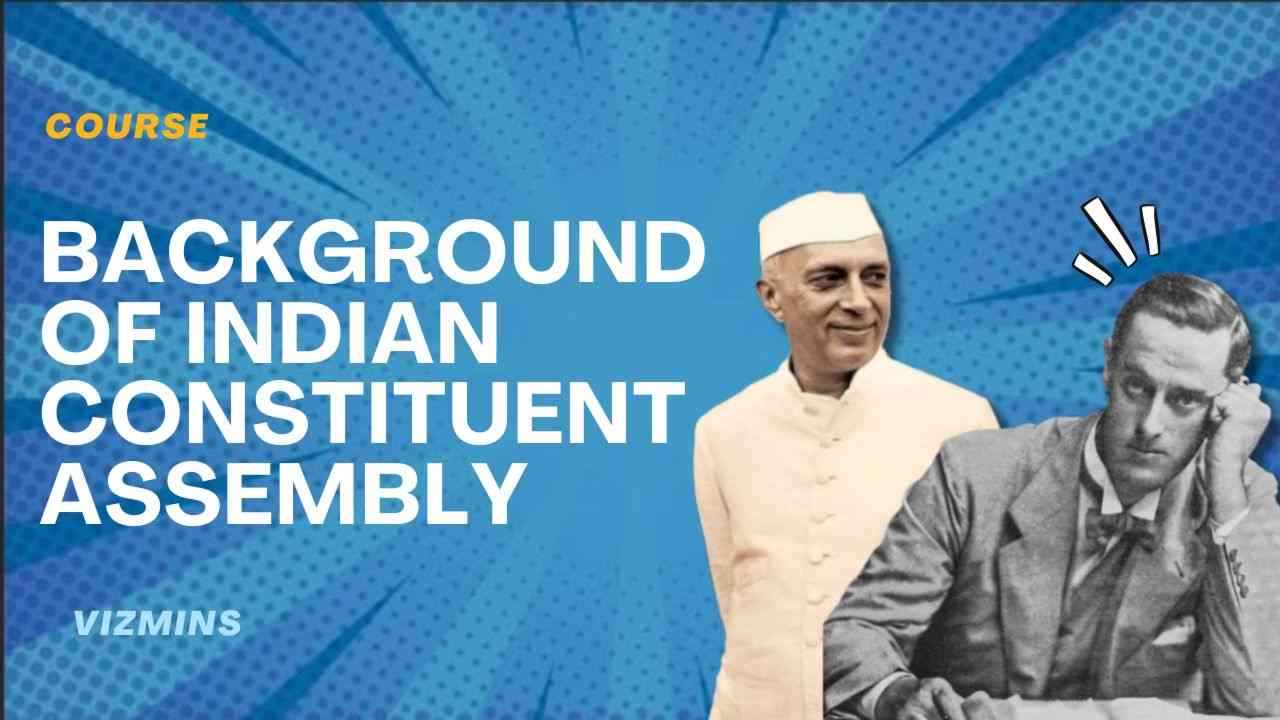Unraveling the Background of the Constituent Assembly of India
Introduction
The Constituent Assembly of India stands as a monumental testament to the nation’s democratic evolution, shaping the contours of the world’s largest democracy. Its inception was not a haphazard event but rather a result of a series of historical milestones, negotiations, and political developments. In this exploration, we delve into the background of the Constituent Assembly, focusing on key pre-independence events such as the August Offer, Cripps Mission, Wavell Plan, and the Cabinet Mission.
The August Offer (1940)
The backdrop of World War II significantly influenced India’s political landscape. In 1940, as the war raged on, the British government sought Indian cooperation and support. The August Offer, made by British Prime Minister Winston Churchill, promised a post-war expansion of the Executive Council of the Viceroy with the inclusion of Indians. However, it fell short of meeting Indian aspirations for self-determination and independence, leading to widespread disappointment and rejection by major political parties.
Cripps Mission (1942)
In 1942, the British government, under increasing pressure from the Indian National Congress and other political groups, sent Sir Stafford Cripps to India with a proposal aimed at gaining Indian support for the war effort. The Cripps Mission suggested the establishment of a post-war dominion of India, with the right to secede from the British Commonwealth if it wished. However, the proposal lacked clarity on crucial matters like the division of powers between the center and the provinces, and the demand for an immediate transfer of power was not met. The mission failed to garner consensus, leading to further political turmoil.
Wavell Plan (1945)
As World War II neared its end, the British government recognized the need for a political solution in India. Lord Wavell, the Viceroy of India, proposed a plan in 1945 that aimed to form an Executive Council with a majority of Indian members, along with the establishment of a constituent assembly to draft a constitution. However, the plan failed to gain traction due to disagreements between Congress and the Muslim League overrepresentation and power-sharing.
Cabinet Mission (1946)
The Cabinet Mission, a crucial turning point in India’s constitutional history, was dispatched to India in 1946. Comprising three British Cabinet ministers – Sir Pethick-Lawrence, Sir Stafford Cripps, and A.V. Alexander – the mission aimed to facilitate the framing of a constitution for an independent India. It proposed a three-tiered federation, accommodating both British provinces and princely states while providing for the grouping of provinces based on religious and other considerations. Despite initial acceptance, the plan eventually faced resistance and led to communal tensions, laying the groundwork for the partition of India in 1947.
Conclusion
The journey towards the formation of the Constituent Assembly of India was marked by a series of attempts and negotiations, each shaping the political landscape in its way. The August Offer, Cripps Mission, Wavell Plan, and Cabinet Mission were integral in defining the parameters of India’s constitutional journey. As we reflect on these historical events, it becomes evident that the Constituent Assembly emerged not just as a product of political compromise but as a beacon of hope, unity, and determination to shape a future where the people of India could govern themselves through a constitution of their own making.
Course Features
- Lectures 5
- Quiz 0
- Duration 10 weeks
- Skill level All levels
- Language English
- Students 14
- Certificate No
- Assessments Yes
- 5 Sections
- 5 Lessons
- 10 Weeks
- Demand of Constituent Assembly1
- August Offer1
- Cripps Mission1
- Wavell Plan1
- Cabinet Mission1







